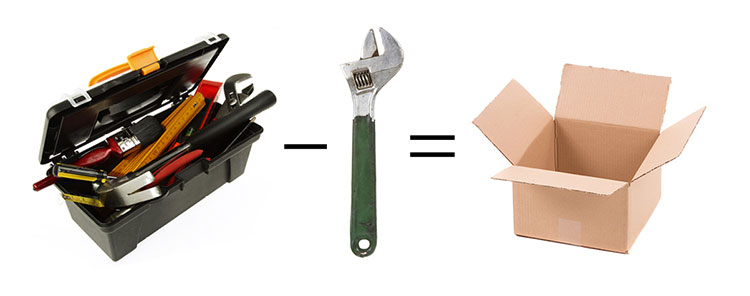D5: Compound Words, Part 3
1. Overview
Hear a two-syllable compound word and identify the last syllable, using picture cards as visual clues. Dividing a compound word into individual syllables is called analysis. Identifying the second syllable is more difficult than focusing on the first syllable, so it may take a while for your child to master this activity.
“Say toolbox, without tool…”
2. Materials
- Script
- word list
- picture cards (includes word index) – these are the same cards that were used in Compound Words, Part 1
3. Activity
Video: How to play Compound Words, Part 3
Before each round of the game, find the appropriate picture card (the word list will tell you which one to use). Go through the images on the picture card and name them, to make sure you and your child are using the correct word for each picture (e.g., bird, not robin). Name the pictures from left to right and from top to bottom.
Adult: [showing picture card] Let’s look at these pictures. They show a light, a lock, a bowl, and a box. Now you name each picture as I point to it. Child: Light. Lock. Bowl. Box. Adult: Good.Be sure to do this identification before introducing the compound word for your child to analyze. To start the game, you will say a two-syllable compound word from the provided word list, and have the child repeat it. Then ask her to tell you only the last word you say. Hold up the appropriate picture card to give her a visual clue.
Adult: I’m going to tell you a two-part word and ask you to tell me only the last part of the word I say. The last part of the word I say will be the same as one of these pictures. Here’s the word. Listen: toolbox. Say toolbox. Child: Toolbox. Adult: Now say toolbox, but don’t say tool. What is the last word in toolbox? Look at the pictures. Do you see the word in one of these pictures? Child: Lock. Adult: Let’s try again. Listen: toolbox. Tool…box. What’s the last word I said when I said tool…box? Child: Box! Adult: That’s right.Go through the other words in the word list until your child stops paying attention. You can continue the activity at your next session. NOTE: Be careful not to add an extra “the” to your instructions, as in: “Say toolbox without the tool.” The extra word will just confuse your child. ↑ Top
4. Confidence Builder
Hold up the appropriate picture card, point to each picture and name it. Then ask one by one, whether that picture fits the answer you’re looking for:Adult: Look at these pictures: ball, bow, ham, and horse. Is rainbow without rain a horse? Child: No. Adult: No, I didn’t say rain-horse. Is rainbow without rain a bow? Child: Yes!↑ Top
5. Small Groups (2-5 children)
Lesson Objective: Using picture cards as visual aids, children will hear a spoken two-syllable compound word, delete the first syllable, and say only the last syllable of the word. GELDS (Georgia Early Learning & Development Standards): CLL6.4e Georgia Standards of Excellence: ELAGSEKRF2.b Common Core State Standards: CCSS.ELA-LITERACY.RF.K.2.B Adaptation: Read the main activity, watch the video, and follow the instructions above, with the following changes: Say a compound word, and have children respond by repeating the word while whispering the first syllable. Have the children do this multiple times, whispering the first syllable more and more softly until their whispers can’t be heard and only the last syllable of the word is audible. Use the picture cards to keep children focused on the word that does not disappear. Give each child several opportunities for responses. Ask the children to look in their homes for compound words. Parents can provide a list to share with the class (bedroom, bathrobe, etc.). To help the children understand that now we are looking for the last part of the word, line the children up in a row and ask, “Who is first? Who is last?” Change the order of the children and repeat. Reinforcement: Have children hold their fists in front of them, side by side, to represent the two parts of the spoken compound word. Have them repeat the compound word. Then have them put the fist that represents the first part of the compound word (their left fist, because we read from left to right) behind their backs and say only the word represented by their remaining (right) fist. Use this Reinforcement at Home form to tell parents and guardians how they can reinforce lessons outside the classroom. ↑ TopLeave a Reply

One Response to “D5: Compound Words, Part 3”
Freda Williams
Again I love the activities and the specificity of the directions and how each lesson builds on the next one for children systematically. There are so many missing pictures for the word list given it does make it difficult to play the games without second guessing which words can’t be done or I have to make my own picture for.